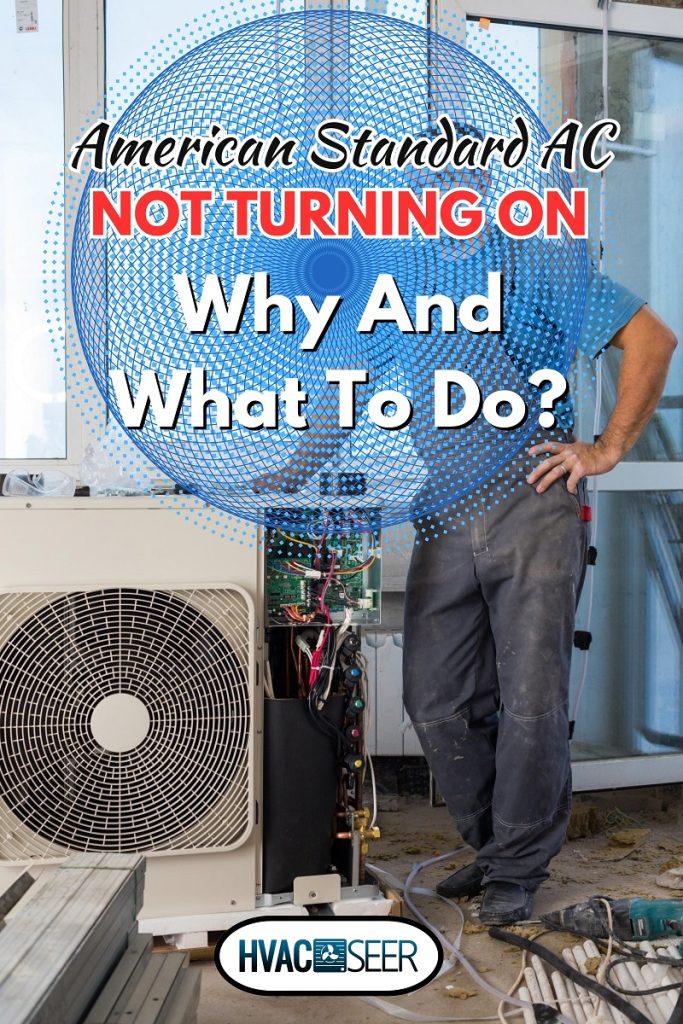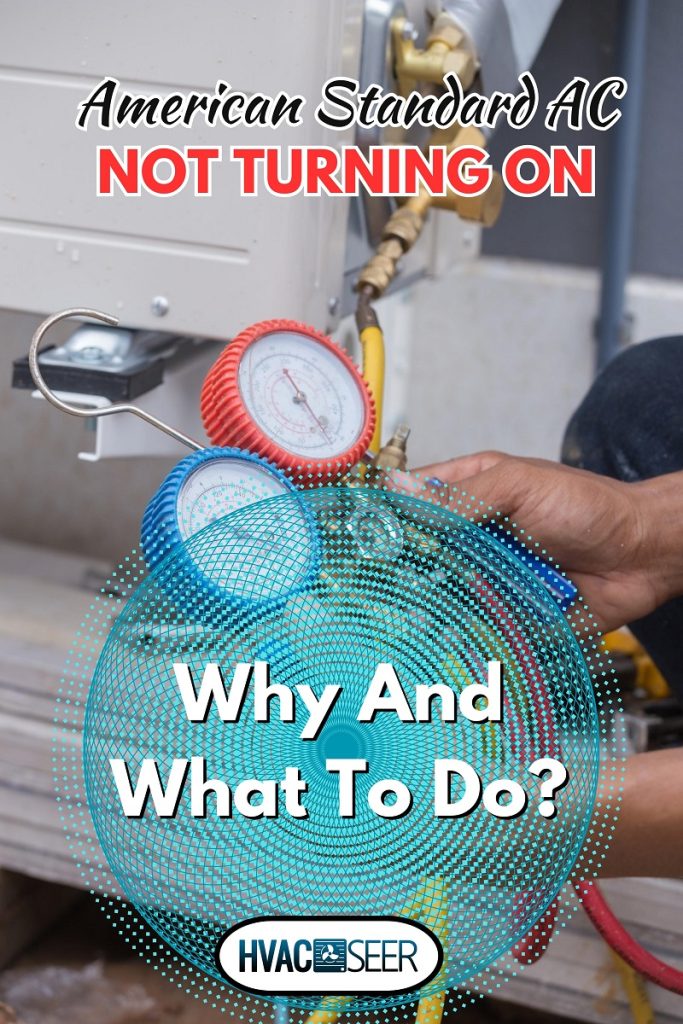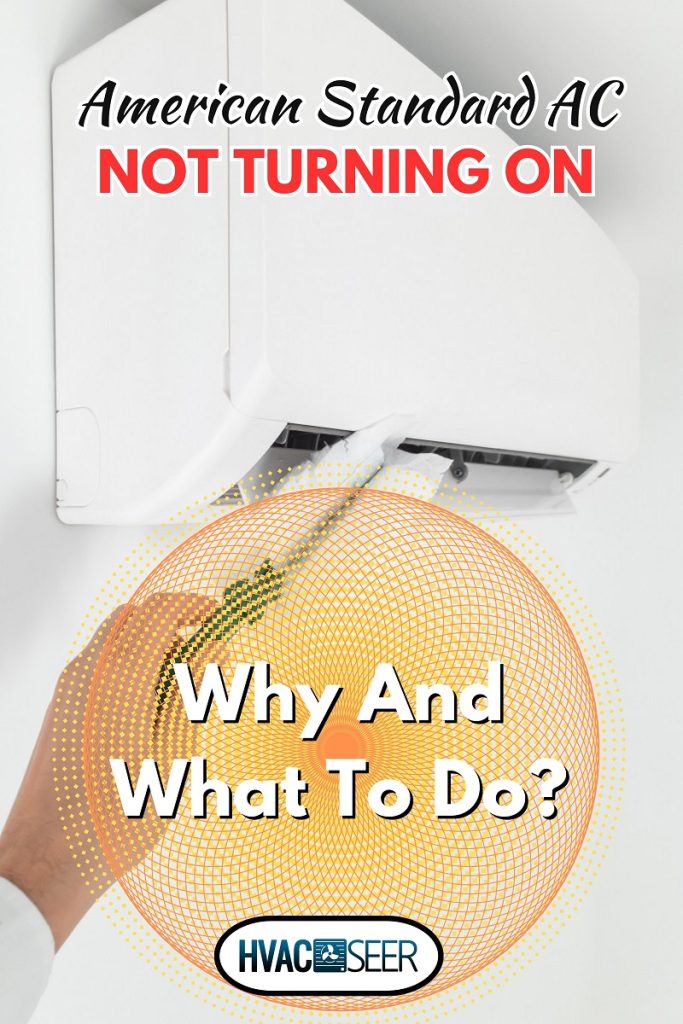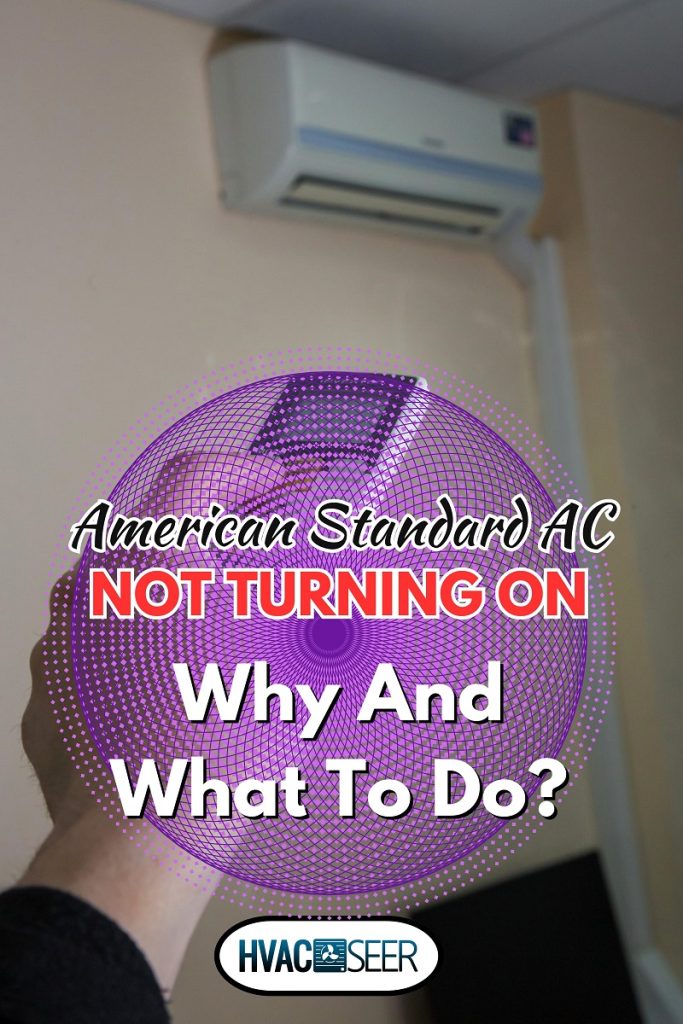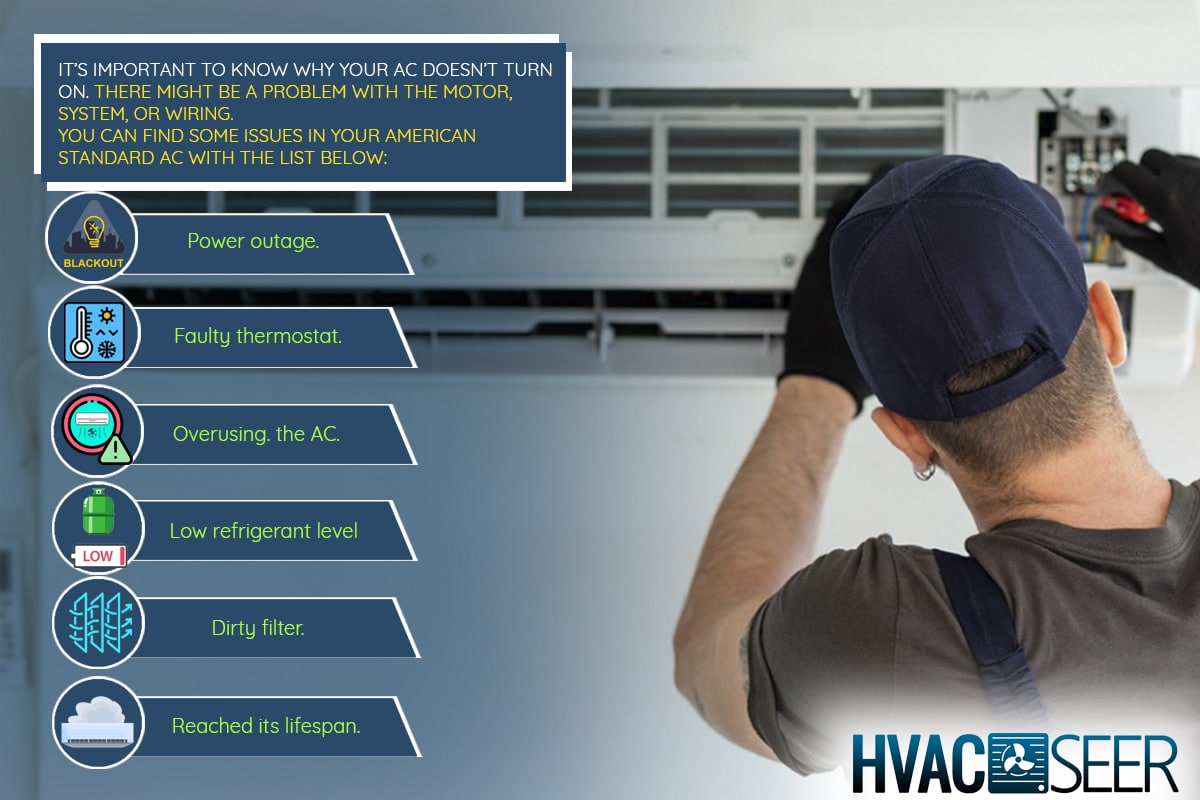You might want to use your air conditioner again. But what if the American Standard AC is not turning on? Why does this happen, and what should you do? Don't worry because we can help! We did comprehensive research for you.
It's important to know why your AC doesn't turn on. There might be a problem with the motor, system, or wiring. You can find some issues in your American Standard AC with the list below:
- Power outage.
- Faulty thermostat.
- Overusing the AC.
- Low refrigerant level.
- Dirty filter.
- Reached its lifespan.
Today, we'll figure out why your American Standard AC isn't working. We'll provide ways to fix this issue. Also, there are more related topics to discuss. Let's not waste time. Join us in reading!
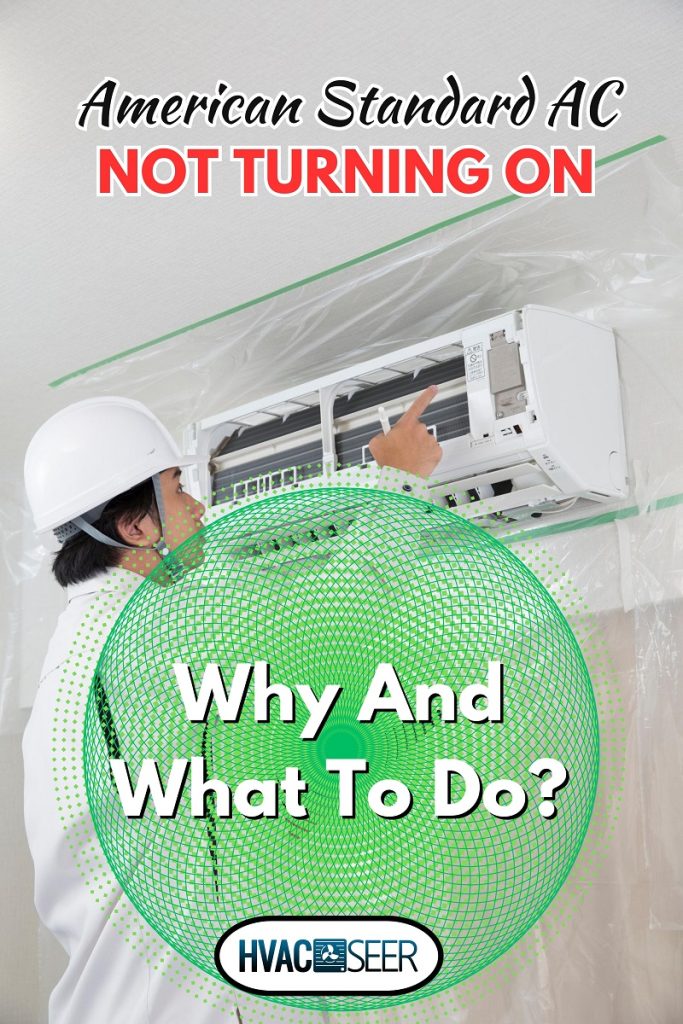
Why Is American Standard AC Not Turning On?
It's quite an inconvenience when you try to turn on an AC but it fails to function. There might be broken parts that need immediate repair or some maintenance concerns. You can find below some reasons why your American Standard AC doesn't work and how to resolve the issues. See the list below.
1. Power Outage
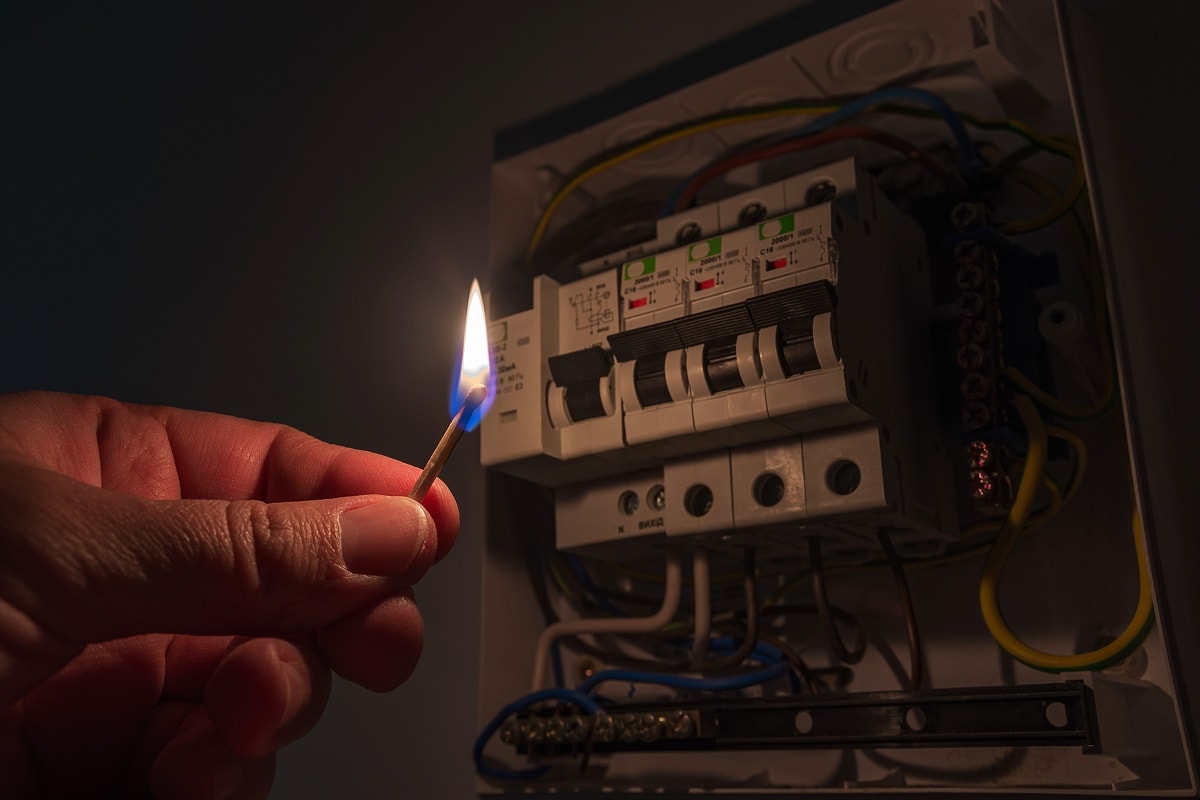
A power outage pertains to the sudden loss of electricity, affecting the appliances and causing the units not to turn on. The power outage can be due to severe weather, or an intentional power shutdown by the local authorities. It's also possible that there's something wrong with the wiring.
Make sure the AC unit is wired properly by inspecting the circuit breaker. Secure and tighten the wires at their respective terminals. However, check if the appliances are receiving electricity except for the AC unit. If that's the case, then maybe the power supply is not the problem. You can seek help from an electrician for further wire assessment.
2. Faulty Thermostat
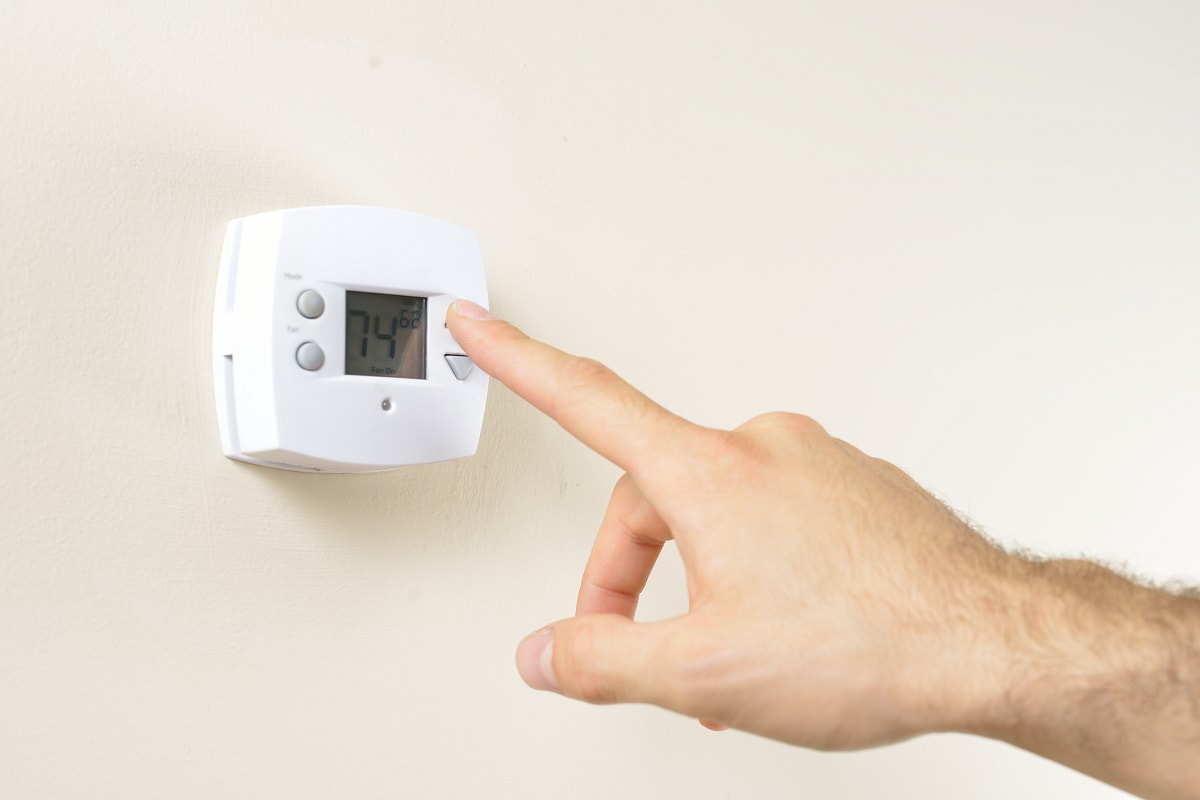
Modern AC units are programmed at the thermostat. You may need to reboot the thermostat to allow accurate reception between the thermostat and the AC. You can reboot an American Standard wireless thermostat with the steps below:
- Switch off the AC unit even if it's not working. This is to prevent the AC from damage.
- On the thermostat, press the "MENU" and find the settings.
- Press the "REBOOT" icon and confirm the action by pressing "YES." Wait for the AC to complete rebooting.
If rebooting doesn't work, then the thermostat could need repair or replacement. Consult your HVAC technician to fix the thermostat. Otherwise, try more options below.
3. Overusing the AC
Remember that AC needs to rest. The AC unit should run no more than 12–16 hours a day. It's best to leave the AC unit off when not in use or if the room temperature is comfortable enough for you. This also helps prevent the motors from overheating.
So, an overused AC may cause a malfunction of the condenser, compressor, and other components. You might need to put the AC unit on rest for a few more hours to recover.
4. Low Refrigerant Level
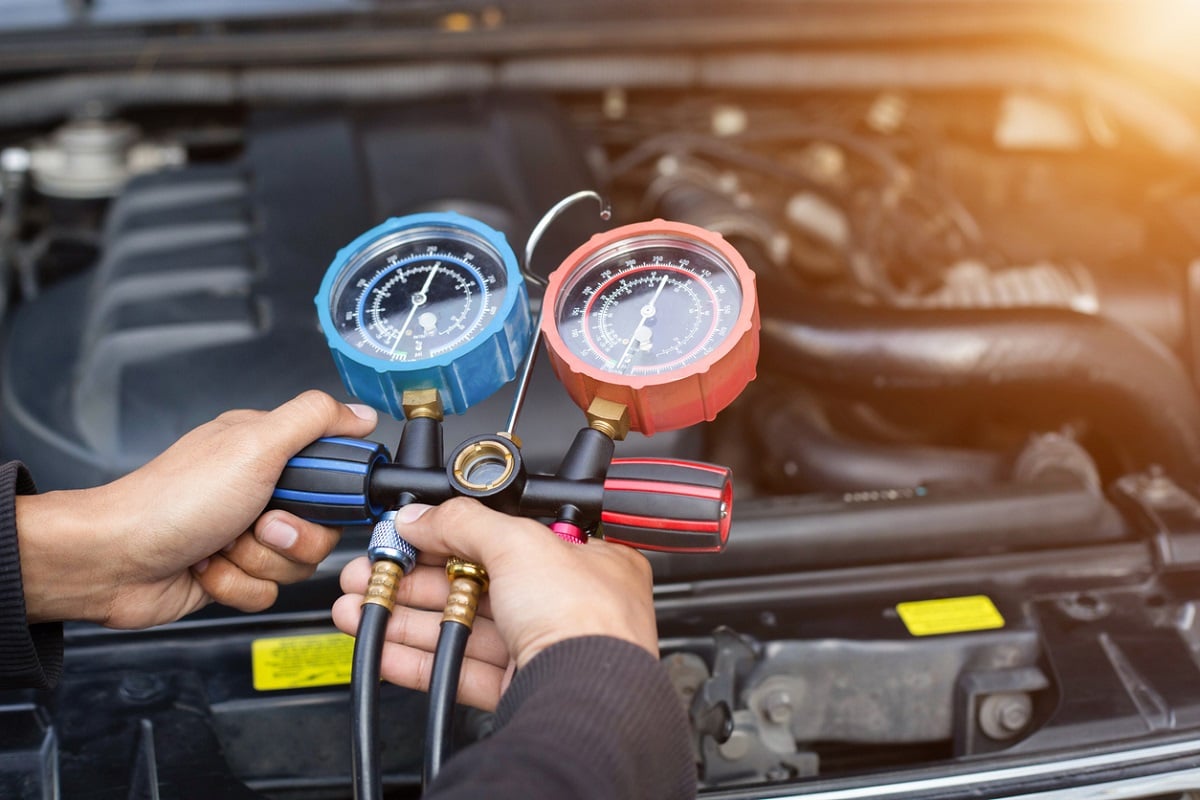
Refrigerant is a liquid chemical that quickly turns into a gas as part of the AC's cooling process. Low refrigerant levels will cause the AC motors to stop working.
It's possible that refrigerant is leaking. Leaking refrigerant wastes energy and has the potential to damage the AC unit. It can even harm you if you don't resolve this issue.
You can use a refrigerant leak detector to easily find out where the leak starts.
See this refrigerant leak detector on Amazon.
You may refer to the following signs that an AC is leaking refrigerant.
Slow Cooling Cycle
Due to the leak, the compressor will struggle to process the refrigerant, which will result in a slow cooling cycle. You'll notice the air becoming dry as the condenser fan cannot release a cool temperature. This will later cause the compressor to stop and lose power.
Ice Formation on Coils
If you see ice forming around the evaporator coils, then the refrigerant is leaking. Since refrigerant is initially liquid, its failure to run through the coils will create solid particles of ice, restricting the airflow.
Ice buildup in an AC is a serious issue. It will melt soon and may result in permanent damage.
However, you can resolve this by cleaning the evaporator coil. See the steps below:
- Turn the AC off and unplug it.
- Open the case of the access panel, then remove the top cover.
- Use a soft brush to clean the fan. You can also lubricate it for a smoother motion.
- Spray water and foam cleaner on the coils. Let it sit for 10–15 minutes.
- Dry the coils with a soft cloth, and inspect for any damage.
- Put back the cover and turn on the AC.
However, it depends on what type of refrigerant you previously used for the AC. The American Standard AC units manufactured after 2010 use R-410a. If you used an R-22 prior to 2010, it's better to consult your HVAC technician if switching to another refrigerant is safe for the unit.
Unusual Sound
If you hear a low hissing sound, it's due to the vibration of the motors in the unit. Dry air triggers a vibration if the refrigerant passageway becomes vacant, allowing the motors to collide with each other.
The AC will not work when turned on, but you'll hear a hissing sound as it tries to complete the refrigeration cycle. This is a strong sign of leaking refrigerant. You might need to refill the refrigerant to continue the AC's operation.
5. Dirty Filter
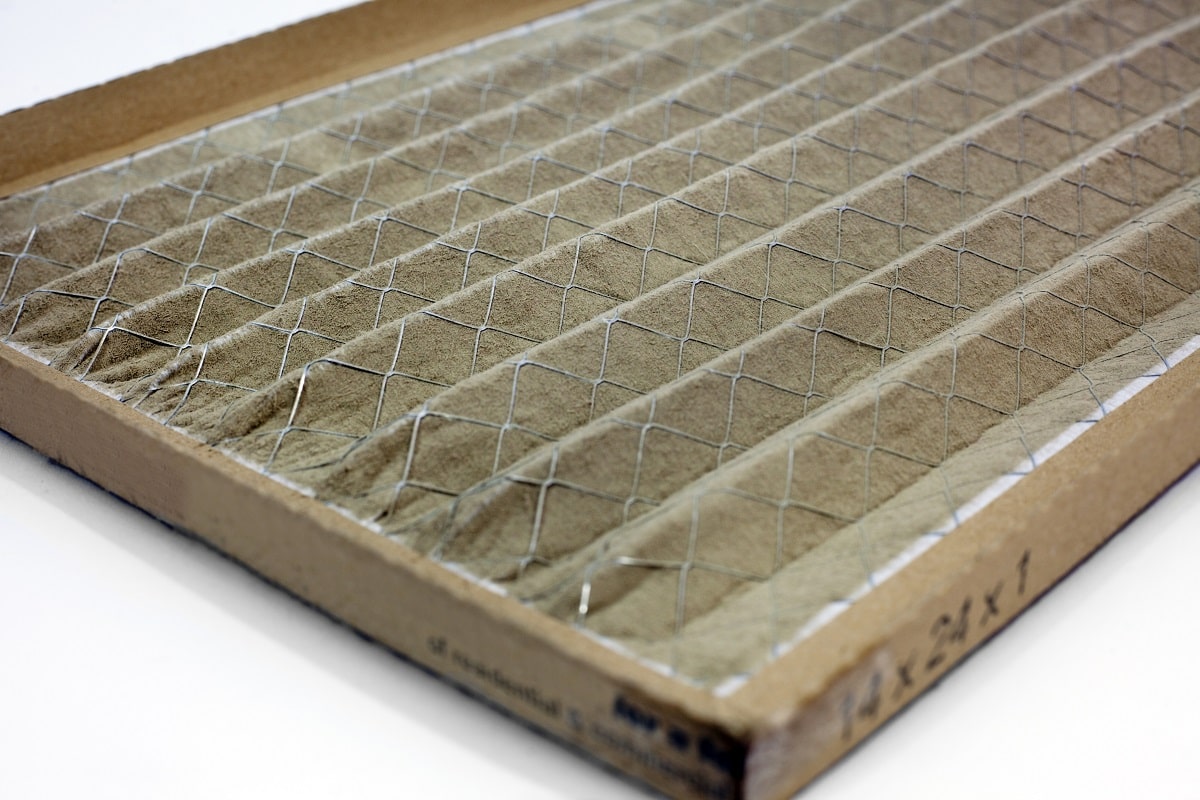
The AC's filter is responsible for straining the dirt when the air passes through it. Dirt accumulation is normal in the AC filter, but you should clean it more often to maximize effective performance. Also, consider changing the old filter to improve the air quality.
So, to change the AC filter, you can follow the instructions below:
- Prepare the new filter and make sure it's the same size as your AC.
- Turn the unit off.
- Use a screwdriver to remove the filter. It's usually on the right side of the AC.
- Brush the AC to remove residual dirt.
- Attach the new filter, then turn on the AC.
6. Reached Its Lifespan
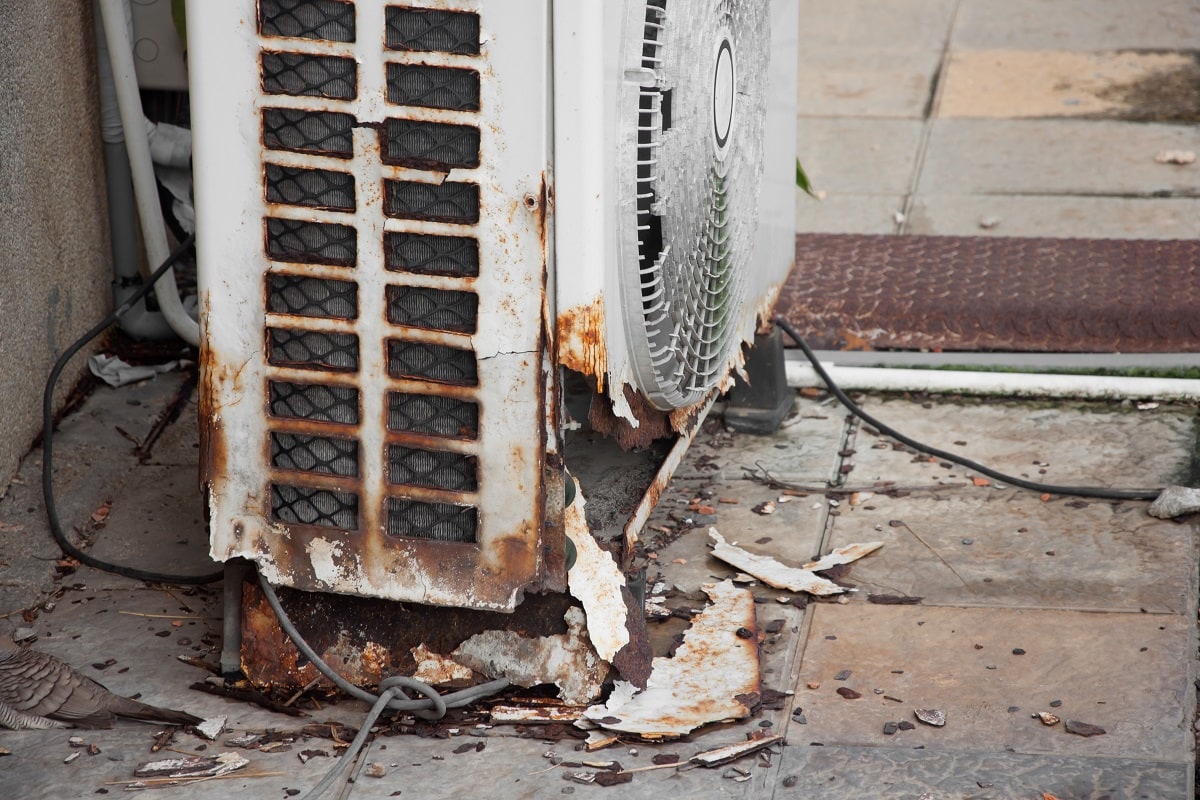
If the AC still won't turn on, then it has probably reached its lifespan limit. American Standard AC units can last for up to 25 years. So, the AC may lose its ability to function the same way as it had when you first bought it. You can consider investing in a new unit.
How Much Is an American Standard Air Conditioner?
If you've decided to buy a new one, the price of American Standard AC units ranges from around $3,500 to $6,100. This will depend on specifications like the size, model, and installation cost.
Does American Standard Offer a Warranty?
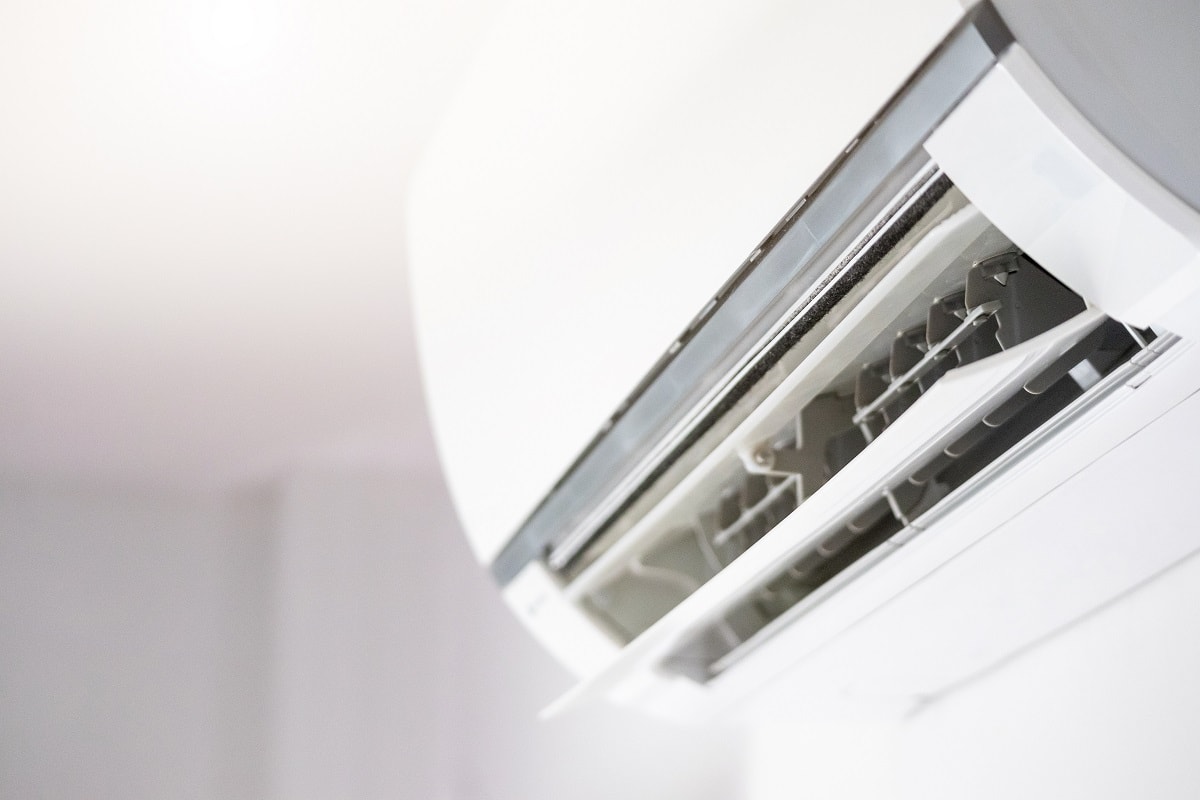
A warranty is an agreed contract between the manufacturer and the buyer. It's a practical way to secure your AC unit from defects and unintended malfunctions. However, not all warranties are automatic. Some manufacturers will require you to register your unit with their warranty terms and conditions.
American Standard offers some options on warranty. See below for these options.
Base Limited Warranty
This warranty ensures that you'll get a replacement unit without any charges, but only if it's a manufacturer's defect. Also, it covers units installed within 60 days, regardless of whether they are registered or not. However, you may shoulder the labor cost depending on the model and replacement timeframe.
Registered Limited Warranty
If you register the unit within 60 days of installation, you'll enjoy a 10-year warranty covering manufacturer's defects. The labor for repair is not covered under this warranty.
Optional Extended Warranty
Depending on the agreement, you can get 5-12 years of coverage on parts and labor. This warranty is even transferrable if the unit is sold to another owner. You can ask your manufacturer to find the most suitable warranty for your unit.
What Is the American Standard's SEER Rating?
SEER, or Seasonal Energy Efficiency Ratio, pertains to average consumption versus its efficiency in terms of cost of usage. Most AC units by American Standard have a SEER rating of between 14.5 and 22. This range is above the required minimum SEER of 14.
Conclusion
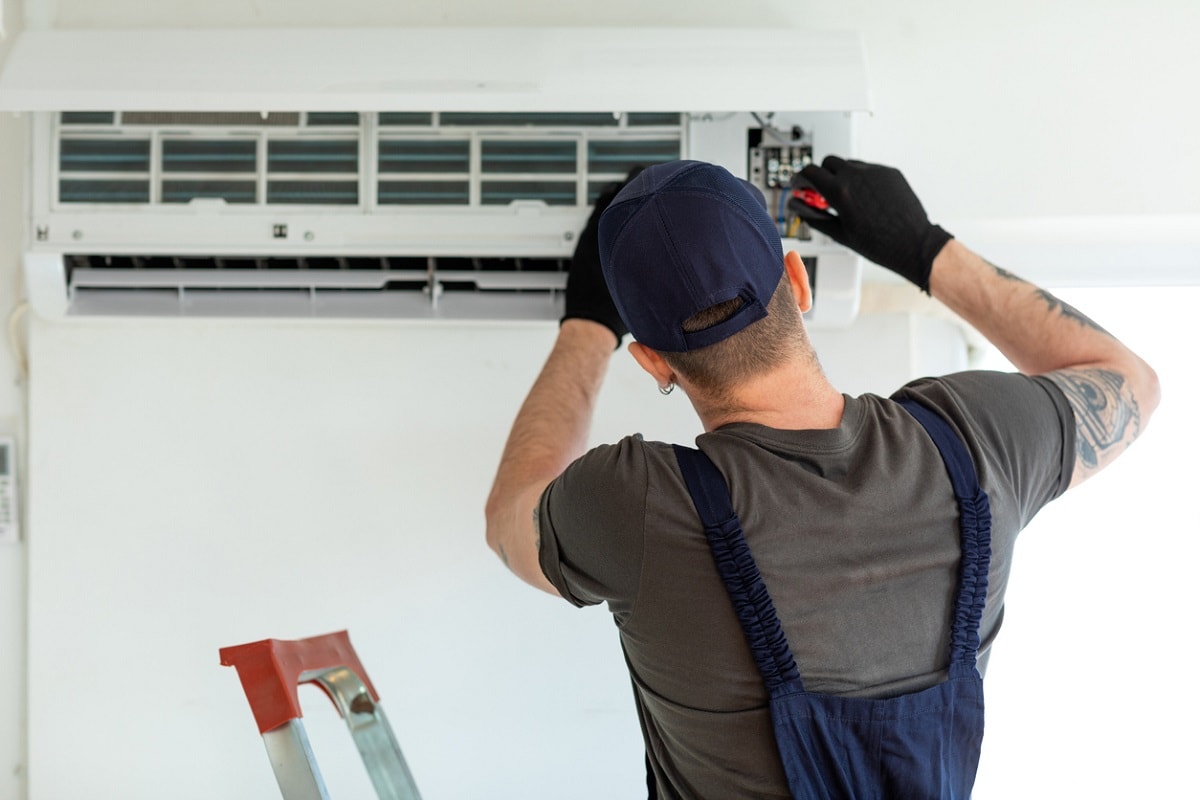
We're grateful you reached this point in the article. In which we learned how to troubleshoot your American Standard AC unit in different ways. Remember that proper maintenance helps prolong the AC's lifespan.
Do you want to read more like this? Visit us here:

